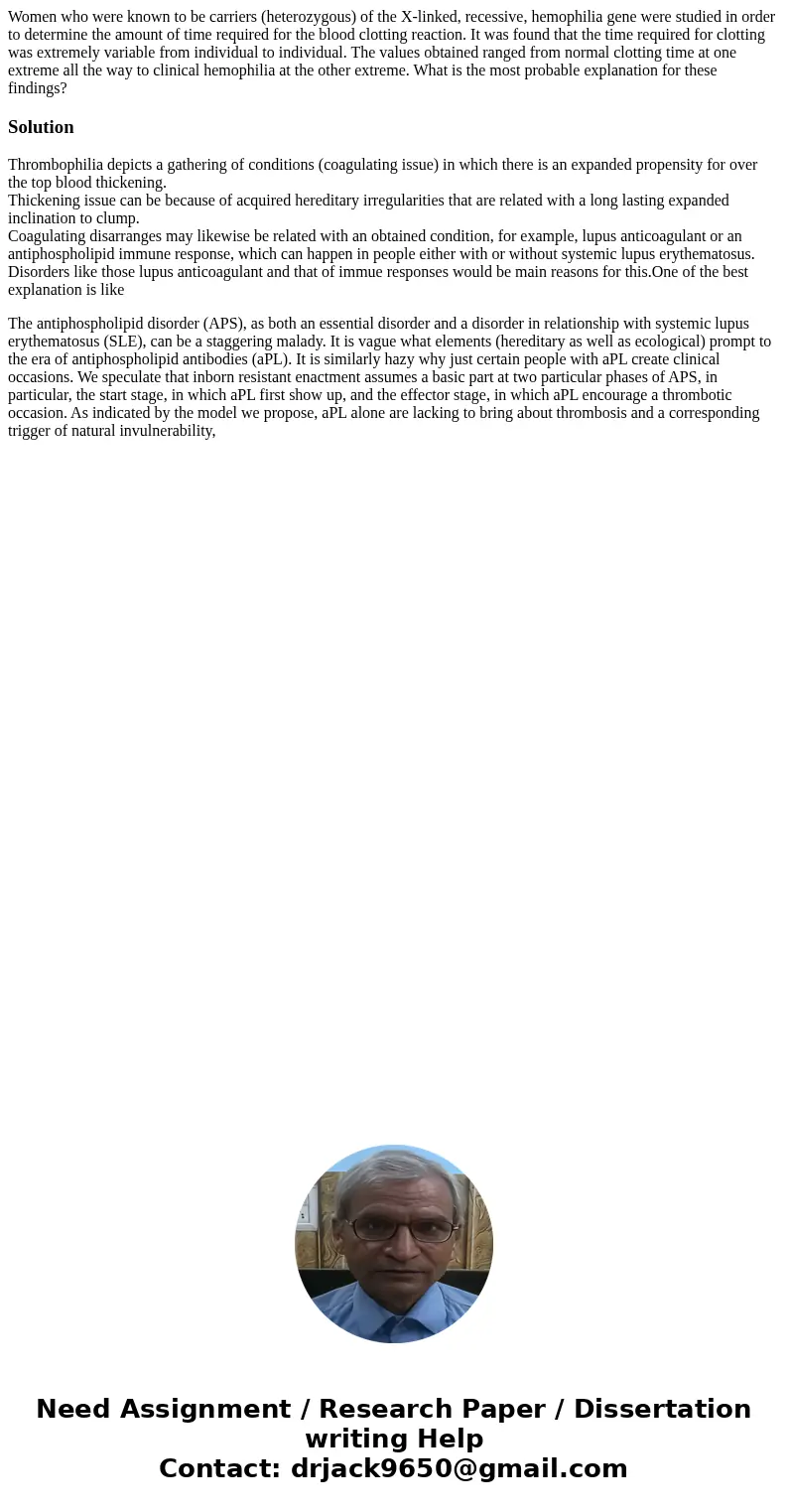Women who were known to be carriers heterozygous of the Xlin
Women who were known to be carriers (heterozygous) of the X-linked, recessive, hemophilia gene were studied in order to determine the amount of time required for the blood clotting reaction. It was found that the time required for clotting was extremely variable from individual to individual. The values obtained ranged from normal clotting time at one extreme all the way to clinical hemophilia at the other extreme. What is the most probable explanation for these findings?
Solution
Thrombophilia depicts a gathering of conditions (coagulating issue) in which there is an expanded propensity for over the top blood thickening.
Thickening issue can be because of acquired hereditary irregularities that are related with a long lasting expanded inclination to clump.
Coagulating disarranges may likewise be related with an obtained condition, for example, lupus anticoagulant or an antiphospholipid immune response, which can happen in people either with or without systemic lupus erythematosus.
Disorders like those lupus anticoagulant and that of immue responses would be main reasons for this.One of the best explanation is like
The antiphospholipid disorder (APS), as both an essential disorder and a disorder in relationship with systemic lupus erythematosus (SLE), can be a staggering malady. It is vague what elements (hereditary as well as ecological) prompt to the era of antiphospholipid antibodies (aPL). It is similarly hazy why just certain people with aPL create clinical occasions. We speculate that inborn resistant enactment assumes a basic part at two particular phases of APS, in particular, the start stage, in which aPL first show up, and the effector stage, in which aPL encourage a thrombotic occasion. As indicated by the model we propose, aPL alone are lacking to bring about thrombosis and a corresponding trigger of natural invulnerability,

 Homework Sourse
Homework Sourse